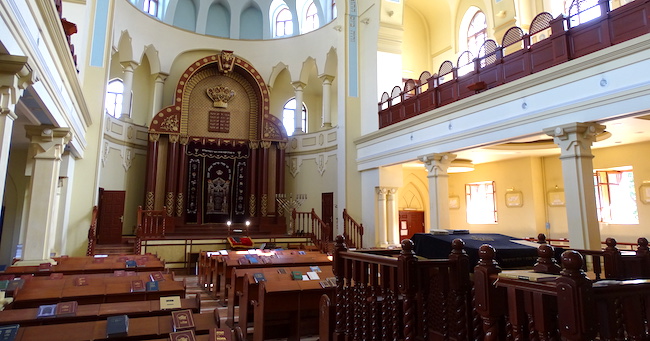
The Mitzvah: The house of G-d necessitates respect and awe, as the verse proclaims “My Sanctuary you shall fear” (Leviticus 19:30). One could not enter the Temple Mount in a lackadaisical fashion, when wearing shoes or carrying money in one’s pocket. At all times, it has to be treated with due reverence for the sanctity of the place. (Indeed, this offers a model the contemporary Jew for a synagogue as the Temple-in-miniature). Nowadays, Jews remain forbidden to set foot within the sacrosanct borders of the Temple, as they anxiously wait the rebuilding of the Third Temple speedily in our days.
In this week’s parasha, Yaakov distressingly awoke after his prophetic dream of the ladder and his vision of G-d: “Surely G-d is in this place and I did not know” he declared (Genesis 28:16). He had fallen asleep on sacred ground; at the place where the holy Temple would later be built. Yaakov was filled with trepidation that he may not have shown due diligence to revering such a holy site and had not demonstrated enough spiritual sensitivity.
What was the significance of this location? And why should this site demand such veneration?
There are parallels in the sphere of “time”, “place” and “soul”. In the calendar, the weekdays are “times” of lesser holiness than the sanctity of Sabbath and the Festivals. There are similar demarcations in the realm of “space”. The Land of Israel is holier than other countries; Jerusalem is the holiest city and the Temple Mount is the holiest “space” therein.
Of course, this was intentional and is laden with spiritual significance. “Time” and “place” began at this point; expanding outwards from the “Foundation Stone” located in the inner sanctum of the Temple, until the universe was fashioned. (See Talmud, Menachos 29b, Yoma 54b). This contains, in some sense, the key and cornerstone to life.
With its feet set earthward and its top heavenward, the ladder is symbol to man’s personal relationship to G-d, and to the world’s general relationship with its Creator. Creation was G-d’s “desire” that He have a dwelling place in the world below, just as He has up Above (Midrash Tanchuma, Naso 16).
The sanctified parameters of the Temple represent the point where Heaven and Earth join together (See Talmud, Bava Basra 74a). The residence of the Shechinah, Divine Presence is where the spiritual and physical domains merge into one. It is the holy “space” wherein man ascends to experience and enter into a profound, spiritual with his Creator while still within the physical confines of this world. And within himself, mankind similarly transforms his body to become the resting place and holy vessel for his “soul”.
The Jewish people climbed up to the Temple on the Three Pilgrimage Festivals (Deuteronomy 16:16-17) as they offered up special sacrifices. This trip would re-energize their appreciation and affinity to spirituality. They were awed by the splendour of the Temple and her vessels. They were dazzled by the dazzling array of miracles that transpired daily (See Ethics of the Fathers 5:7). And they were amazed at the holiness of the house of G-d – that was the locus of the nation and the symbol of Jewish life.
Where entering the court of the king, all concentrated must be directed towards the sovereign. In the palace it is impudent to exhibit a relaxed or even casual demeanor – nothing but full homage to the ruler with exemplary respect and fear. Nothing less is expected in the house of “the King of all kings” – within the Temple. The reverence and respect demanded within the Temple’s confines evoked a climate of sensitivity into realizing what life was all about – a serious enterprise where man relates to G-d, existence whose very inception commenced from this point in the creation of the world.
The imagery of Yaakov’s ladder provides the rungs and symbolism of what a Jew’s life is all about: a life of Kedushah, “Holiness”. It is where physical actions on Earth are directed to G-d and channelled to spirituality, where the realms of “time” and “place” are filled with the “soul”. All of the person’s actions are, accordingly, directed in the service of his Creator, such that even man’s body itself becomes transformed into a “house of G-d” (Genesis 28:22). Text Copyright © 2005 by Rabbi Osher Chaim Levene and Torah.org.


